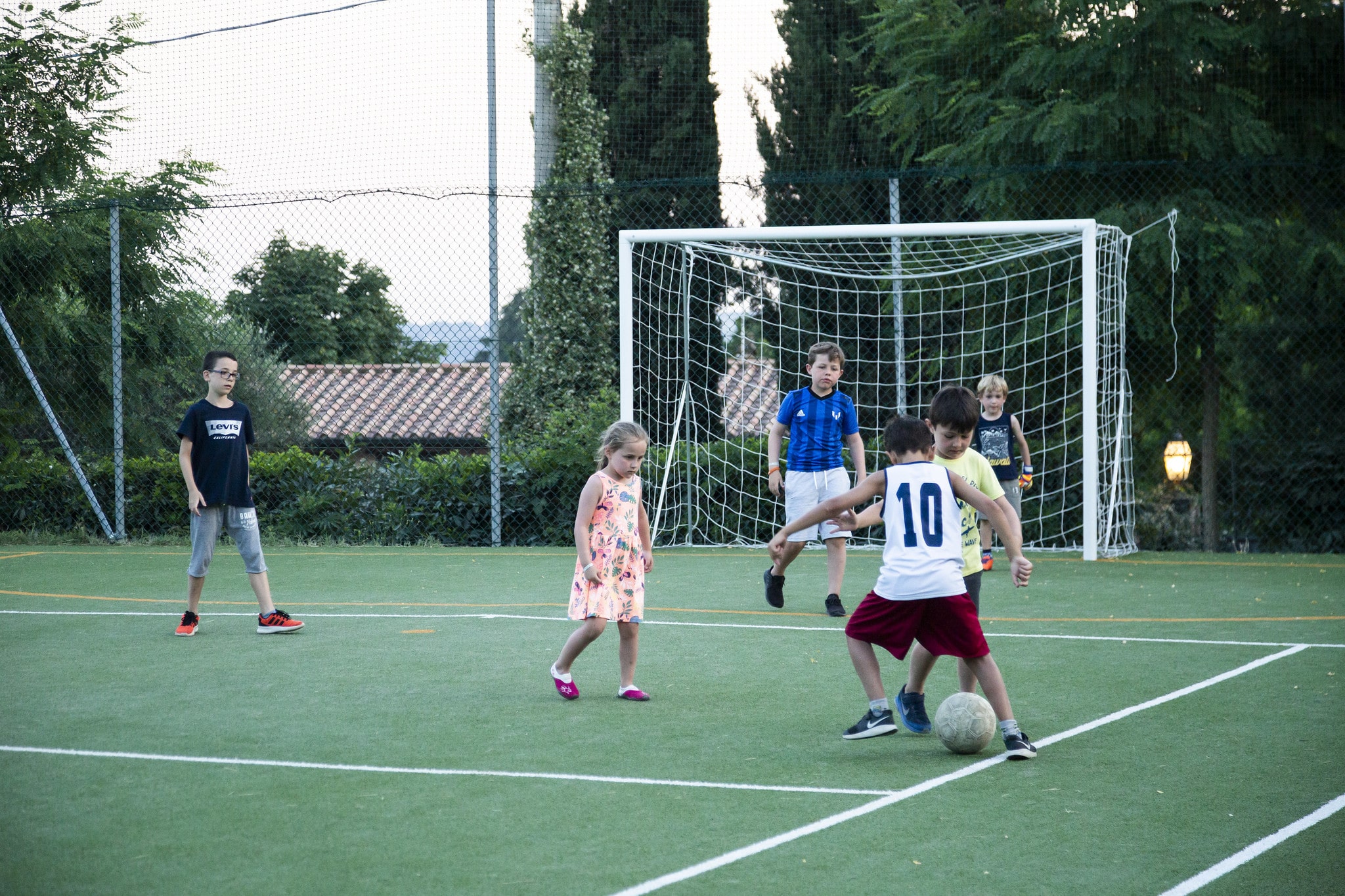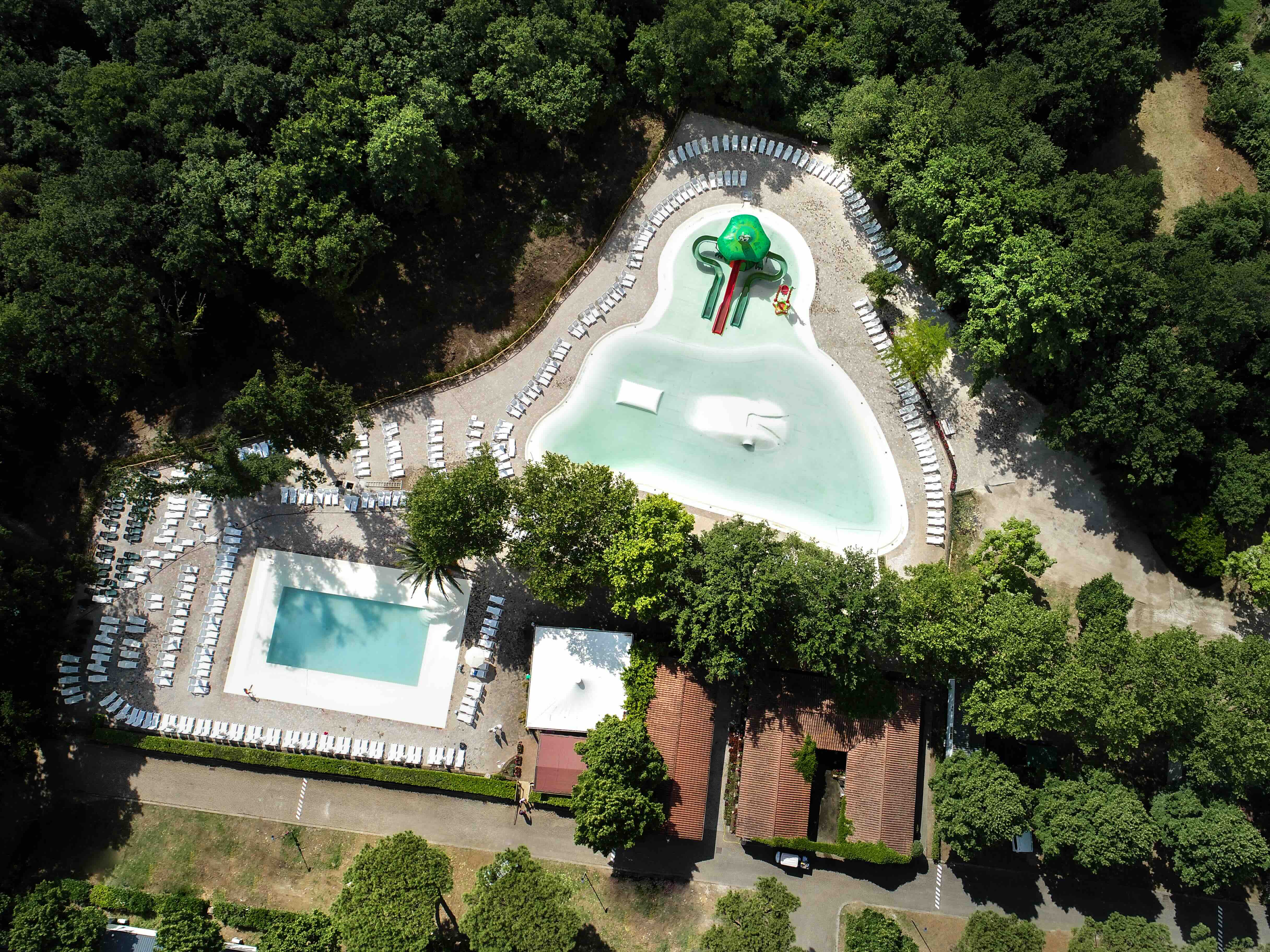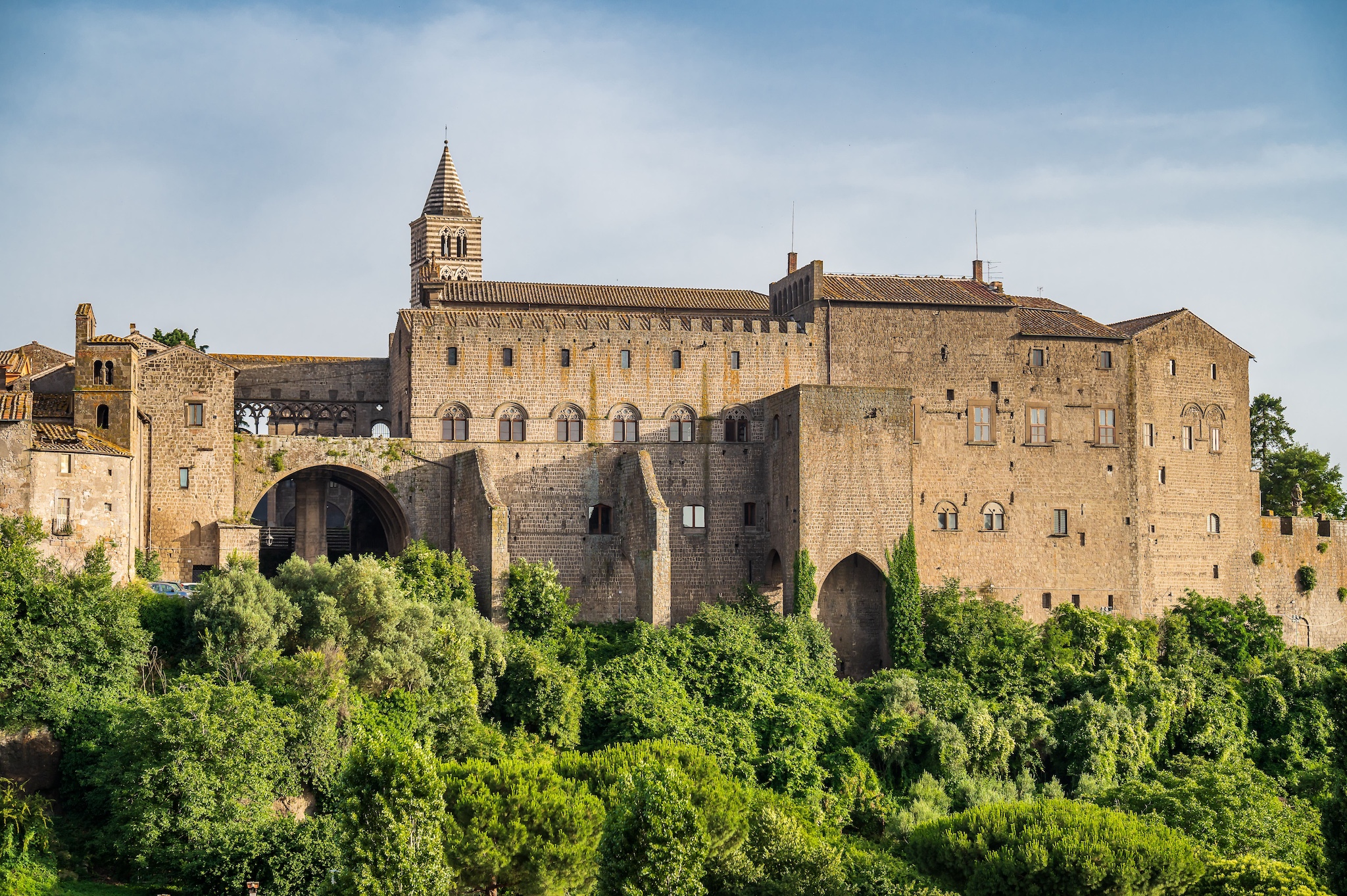
Viterbo
A day in...
The A1, or Autostrada del Sole, passes right by Fiano Romano, the exit of which is a short distance from the HU I Pini Village. Heading north, you arrive at Orte, and then Viterbo with its beautiful historical centre or to Bomarzo, with its legendary Park of Monsters and many other interesting attractions; or to the ancient villages of Civita di Bagnoregio, Celleno and Torre Alfina. Heading south, it’s an easy journey to Tivoli, with its magnificent villas, antique temples and thermal baths: three ideal destinations for a day trip to discover Lazio and its treasures.
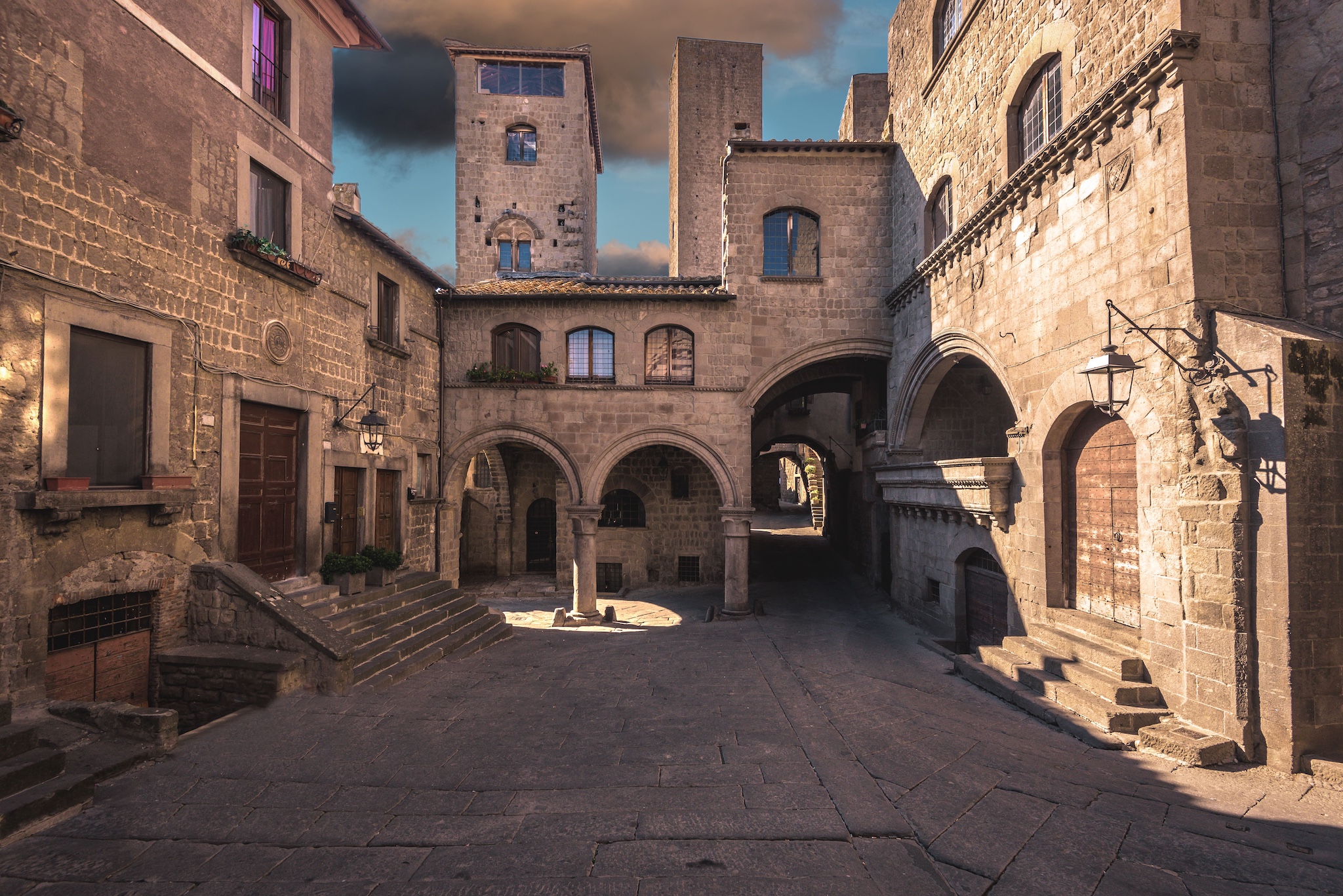
San Pellegrino district
Viterbo, the City of the Popes (and of Saint Rose)
Viterbo’s splendid historical centre preserves the traces of its glorious past when the city was a papal seat from 1257 to 1281. From the outside, admire the breathtaking Loggia delle Benedizioni then visit the Palazzo del Papi along with the neighbouring Museo Colle del Duomo, both of which are part of the Cathedral Hill Monuments Complex: a single ticket also allows you to see the usually inaccessible areas of the Cathedral of San Lorenzo, thought to be built on the ruins of a pagan temple dedicated to Hercules.
Continue on foot to explore the largest medieval city centre in Europe, past arches, towers, stairways and ‘bridge houses’, pausing in the San Pellegrino and Pianoscarano districts. Pass through the austere façade of the Palazzo dei Priori to visit its interior, especially the opulent Sala Regia.
Then go and pay homage to Santa Rosa (Saint Rose), patron saint of the city, whose remains are kept in the Monastery of Santa Rosa. It is from here that on every 3 September since 1258 the spectacular Machine of Santa Rosa, a 5-ton, almost 30-metre-high ceremonial tower with a statue of the saint at the top (listed as UNESCO Intangible Cultural Heritage of Humanity in 2013), is carried in procession through the city. If you happen to be in Viterbo in the days running up to the procession, you can enjoy the festivities that precede it, such as the historical procession in costume or the tour of the seven churches.
Just outside the city centre, stop off at the Piccola Formaggeria Artigiana to buy some excellent cheeses, and at the Pasticceria Alba for cakesbaked by the Fiorentini family since 1960. If you’re looking for relaxation and wellness instead, not far from the centre of Viterbo is a thermal bath complex, the Terme dei Papi, whose waters are curative and definitely soothing.
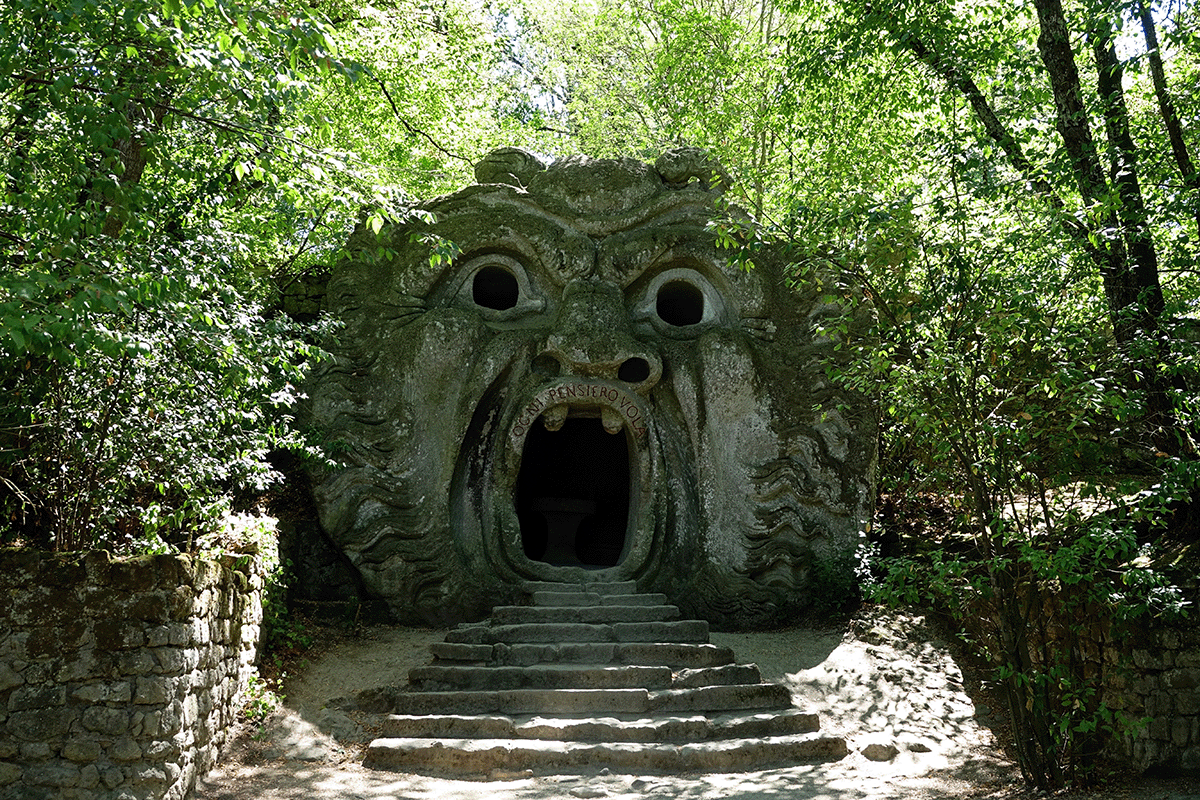
Bomarzo il parco dei mostri
Bomarzo, a place of monsters and mysteries
Bomarzo, just a twenty-minute drive from Viterbo, is a town best known for its impressive Park of Monsters, or Sacred Grove of Bomarzo . Designed in the 16th century by architect Pirro Ligorio, it was commissioned by Prince Pier Francesco (called Vicino) Orsini to commemorate his wife Giulia Farnese after her untimely death and ‘assuage his grief’ through the grotesque and dreamlike sculptures scattered throughout the natural yet surreal landscape of the wood. Pause in front of the rocks, hollowed out to take on human or monstrous appearances, and respect the silence of this place of unique sanctity. You too may leave here with your spirit soothed... or troubled as may be!
The Sacred Grove is not the only mysterious site around Bomarzo: drive through the town and along Via Bomarzese until it crosses the Via Cupa, where there is a tall cistern. Leave your car in the car park a little further on and walk back to the forest along Via Cupa, following the signs left by other ‘explorers’, such as arrows on the ground made of stones and wood. With a pinch of luck and dash of adventure, you should come across the spectacular Etruscan Pyramid: discovered in 1911 but only excavated in 2008, it is still something of a mystery. At 10-metres high, this megalithic construction is said to be the largest rock altar in Europe. Climb its steps to the top to enjoy the view and the bewitching charm of the forest.
Walking through the centre of Bomarzo, don’t forget to take a look at Palazzo Orsini that dominates the town: a jewel of Renaissance architecture inhabited by Vicino Orsini and Giulia Farnese, with stained glass windows that look out towards the Sacred Grove. Today one wing houses the Bomarzo municipal offices, but some of the rooms are occasionally open to visitors.If your excursions have left you hungry, check out the rustic but appetising cuisine at Tutto n’Artro Magnà that serves meat from its own farm.
In the surrounding area, there is a wealth of ancient villages to visit: from the ‘dying town’ – today teeming with B&Bs, restaurants and visitors – of Civita di Bagnoregio perched on a rocky spur connected to the town of Bagnoregio by a narrow footbridge, to Celleno: an uninhabited but well-preserved ‘ghost town’, also located on a tuff rock spur overlooking the plain where Celleno Nuova now stands. Walk through the narrow streets where you can still see some of the old workshops and study the exquisite model of the old town housed in the church of San Carlo. The pretty hamlet of Torre Alfina is the entrance to the fairy-tale Wood of Sasseto (guided tours only, prior reservation required), where you will find the stunning Gothic mausoleum of Marquis Edoardo Cahen.
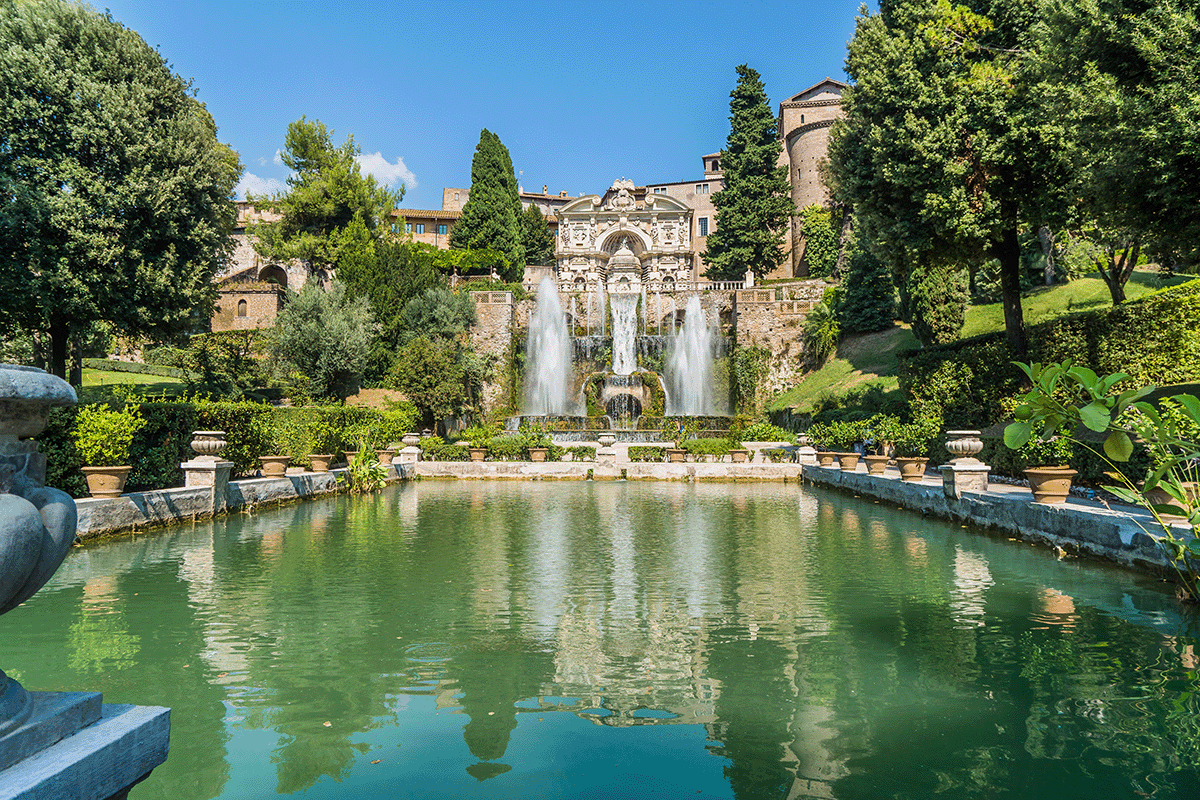
Tivoli
Tivoli, residence of emperors and cardinals
Tivoli is a city dominated by water, starting with the nearby Aniene river, and is known for the remarkable Acque Albule Thermal Baths, which are fed by a natural source of sulphurous water, and for its many fountains that splash around the historic centre. Another attraction making it worth visiting are the splendid villas, evidence of the area’s various glorious historical periods.
At Hadrian’s Villa built by Emperor Hadrian around 126 AD, you can admire the magnificent Nymphaeum of the Canopus and the series of pools and thermal baths, as well as the fascinating museum and the Maritime Theatre, which used to host open-air performances. Villa D’Este, built for Cardinal Ippolito II d'Este, is a wonderful example of Renaissance architecture and boasts rooms richly decorated with frescos as well as a magnificent Italian garden. The nineteenth-century Villa Gregoriana was commissioned by Pope Gregory XVI and is now managed by the FAI [Italy’s historic buildings preservation trust]. It combines archaeological, architectural and natural elements and has an abundance of natural and artificial waterfalls, grottoes and belvederes.
Take a step further back in time by visiting the Temple of Vesta and the Temple of the Sibyl, on the city's ancient acropolis overlooking the valley of the waterfalls. If all these excursions have whetted your appetite, stop by Li Somari to savour the genuine flavours of Lazio cuisine.


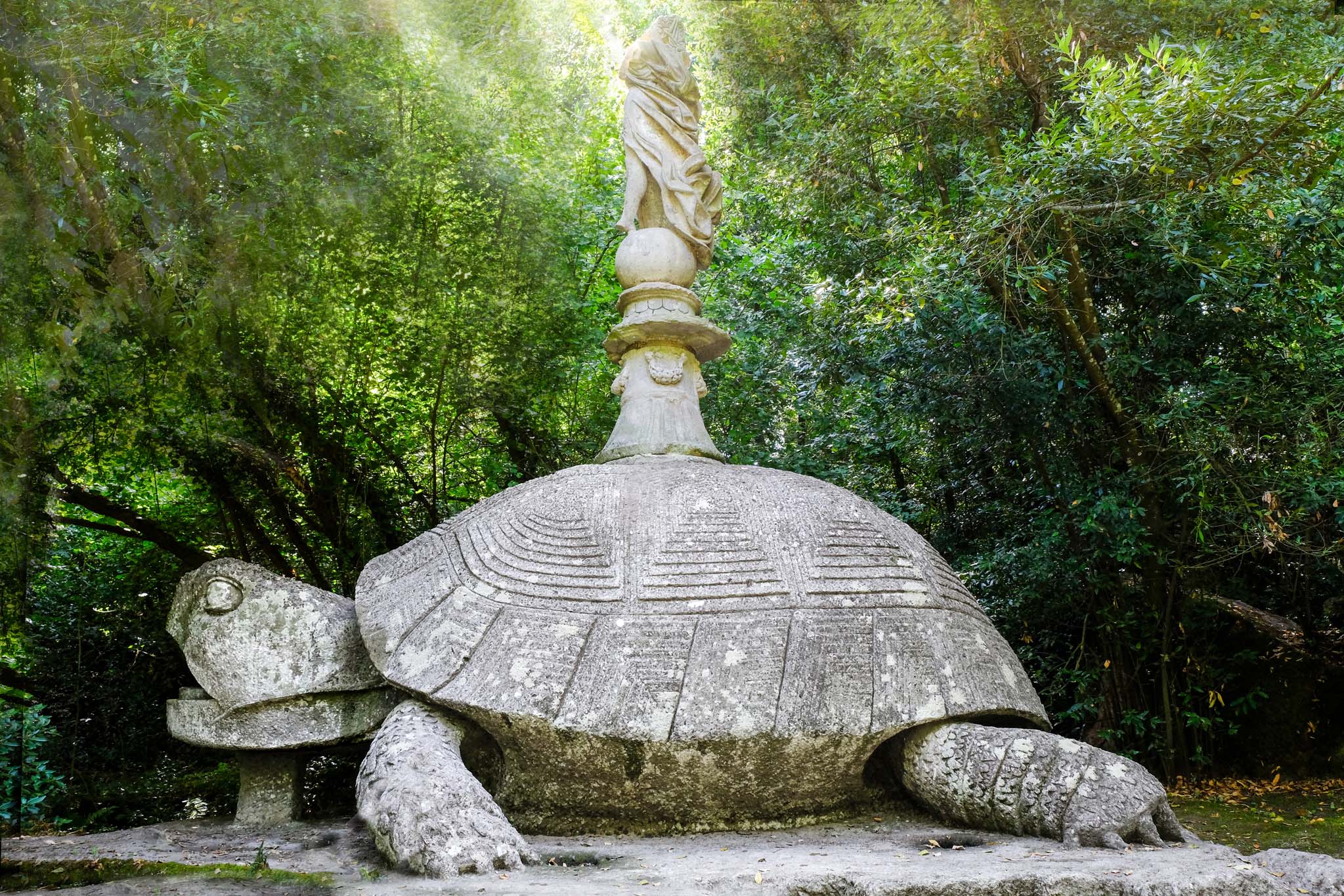
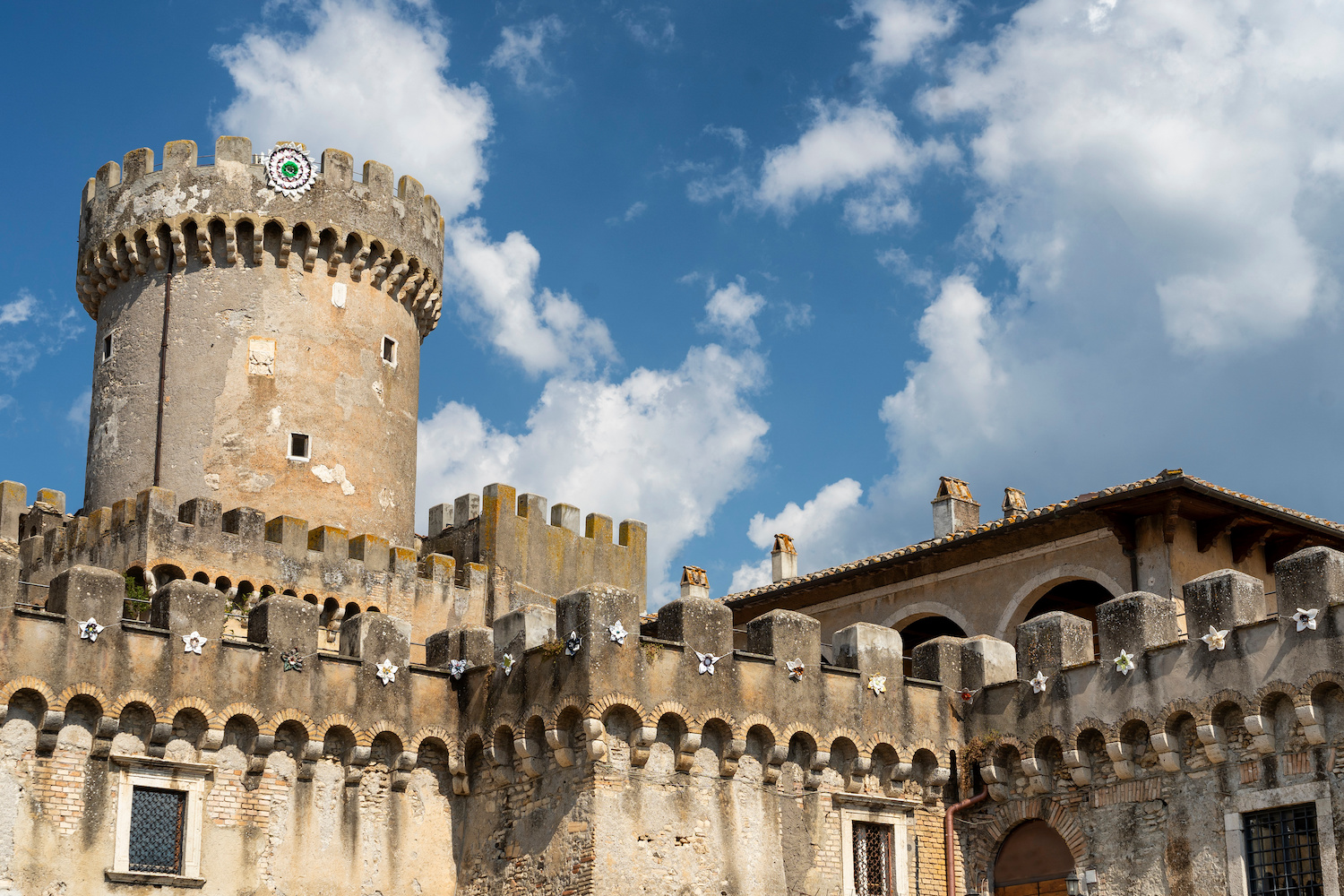
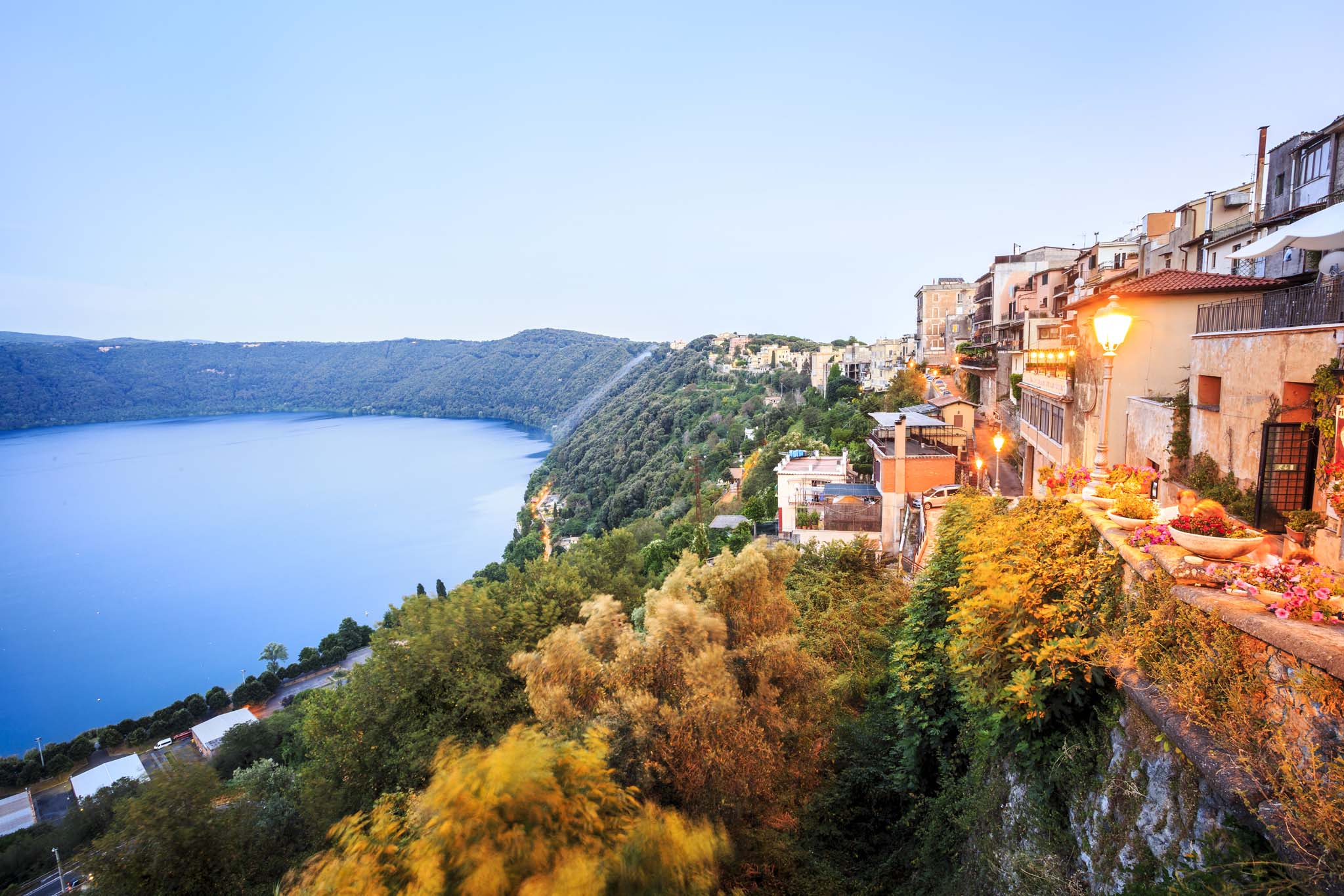
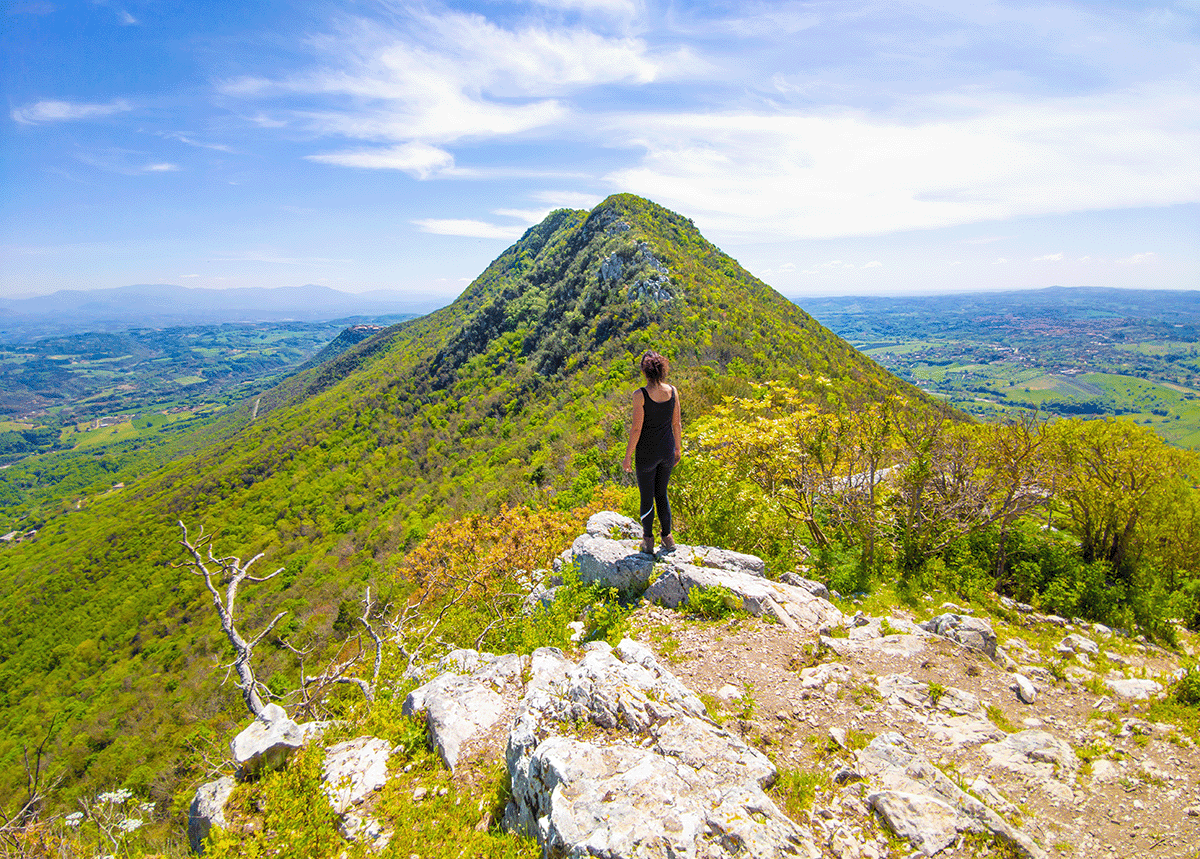
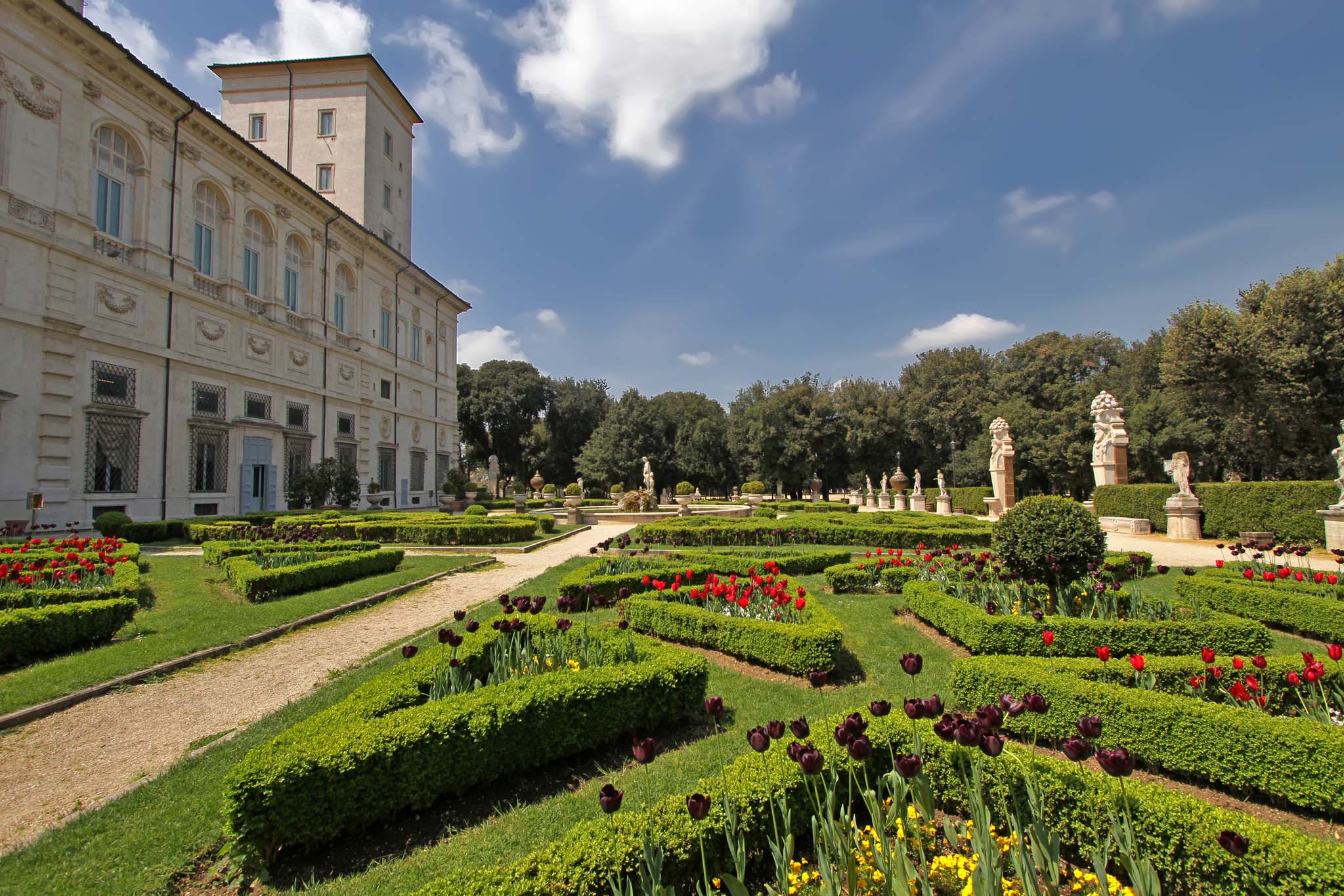
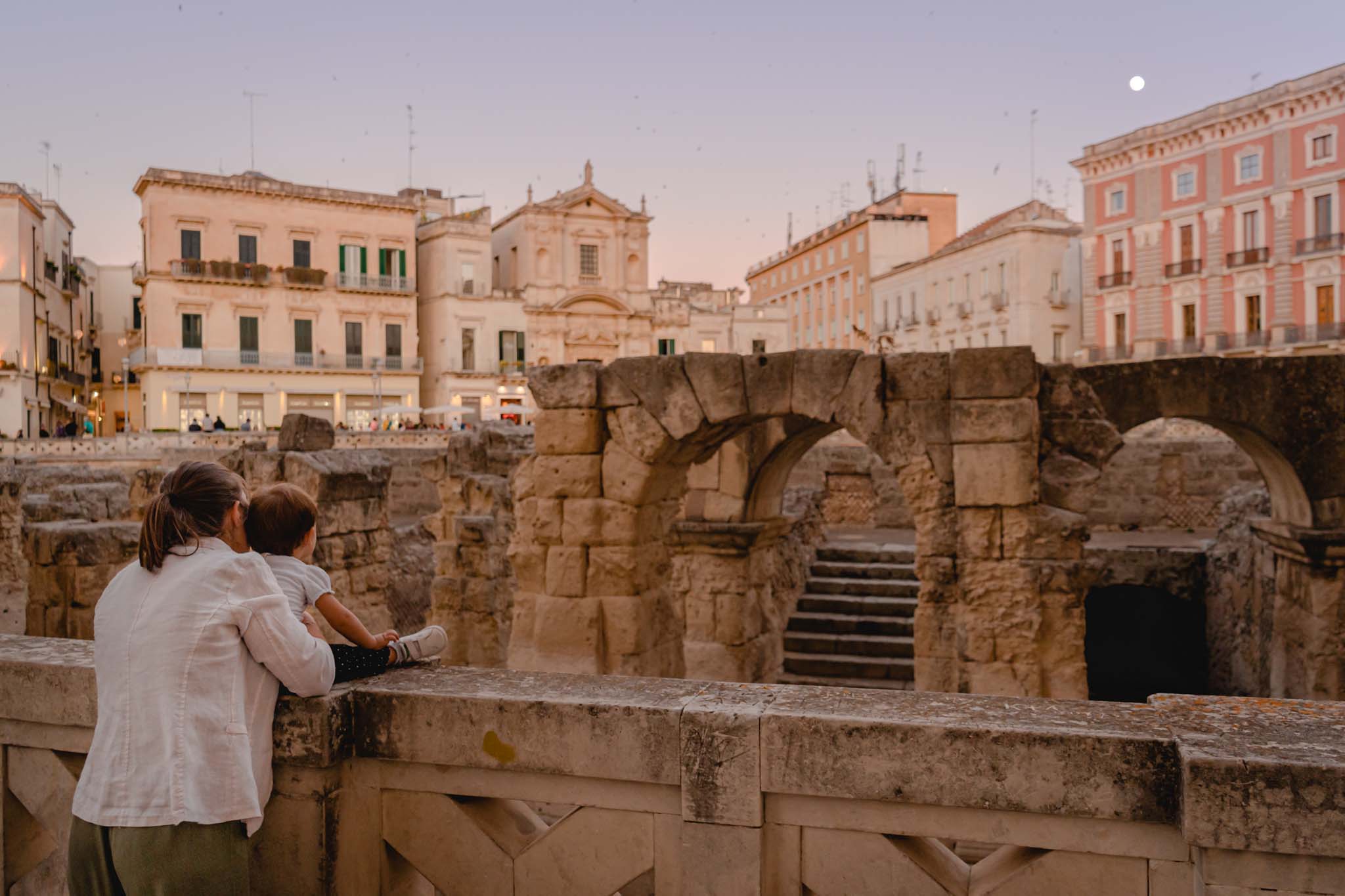

.jpg)
